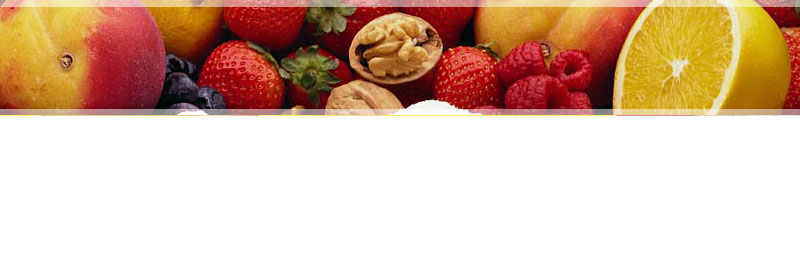| Fibre Explained | ||||||||
| print the page | email the page |  |
|
|||||
What is fibre?
 Fibre is the part of plants that cannot be digested and makes up the structure of plants - including fruits, vegetables, grains and legumes.
Fibre is the part of plants that cannot be digested and makes up the structure of plants - including fruits, vegetables, grains and legumes.
Fibre is a polysaccharide, which means it is a complex carbohydrate and that is why it is essential for good health. Because of the way that fibre is formed, a lot of it usually cannot be broken down into glucose, so it does not provide much energy to the body - this is insoluble fibre. The other type of fibre does break down and is absorbed by the body - this is soluble fibre.
Most plant foods with a high fibre content also usually have a low GI.
Advertisement
Fibre has many important healthy benefits:
- Assisting with healthy digestion - fibre is vitally important for good digestion as it helps food move through the digestive tract and specifically through the small intestine and large intestine (colon)
- Lowering cholesterol - fibre is well known to reduce blood cholesterol levels of the LDL ("bad") cholesterol levels, by binding with the cholesterol molecules and excreting them with the fibre, thus not allowing LDL ("bad") cholesterol levels to build up in the blood. The following foods are well known to assist in lowering cholesterol - oat bran, fruits, prunes, psyllium, legumes.
- Reducing risk of cancer of the colon - much research has suggested that those individuals whose intake of all types of fibre is high have a lower risk of cancer of the colon, and even have a lower risk of developing polyps of the colon (which usually start as benign lumps, but often become malignant)
- Reducing constipation - a diet which includes insoluble fibre is well known to reduce the incidence of constipation. When insoluble fibre reaches the colon, it has absorbed more water and creates soft, large stools which are easy to pass. Bran and prunes are two foods that are high in insoluble fibre and which are recommended to people who have constipation
- Assisting with diabetes - research has shown that the soluble fibre in certain foods (apples, citrus fruits, pears, legumes, oat bran) slow down the digestion of carbohydrates and so stabilise blood sugar level and glucose metabolism. People with type 2 diabetes often benefit the best from incorporating these foods into their diet
Soluble fibre is fibre that will dissolve in water. Soluble fibre is digested in the gastrointestinal tract (usually by the "good" bacteria in the colon) and forms a gel-like consistency when it is dissolved in water.
Foods that are high in soluble fibre:
- Fruits
- Legumes (beans, peas)
Foods that are high in soluble fibre have the following health effects:
- protect against diabetes by lowering blood glucose levels
- protect against heart disease by lowering cholesterol levels
Insoluble fibre is fibre that will not dissolve in water. Insoluble fibre is not readily digested in the gastrointestinal tract.
Foods that are high in insoluble fibre:
- Vegetables
- Grains
Foods that are high in soluble fibre have the following health effects:
- promote regular bowel movements and prevent constipation
Advertisement
There are few exceptions to the above, so this information can be used as a general guide.
Fibre is normally classified as being of the following types:
- Cellulose - this is what all vegetables, fruits and legumes have within their cell walls. Cellulose is an insoluble fibre
- Gums & mucilages - gum is the liquid that is secreted from plants when they are cut. Examples of edible gums are - guar gum and gum arabic. Mucilages are the liquid inside plants and are similar in structure to gums. Examples of mucilages are - psyllium and carageen. Both gums and mucilages are types of soluble fibre
- Hemicellulose - cereal fibres are formed mainly from hemicellulose. This is a type of insoluble fibre
- Lignans - lignans are a special type of fibre as they are examples of phytoestrogens, which have eostrogen-like effects on the body. The food with the highest level of lignans is flaxseed. Other food sources are: pumpkin seeds, sesame seeds, rye, soybeans, broccoli, beans, and some berries. Lignans are an insoluble fibre
- Pectins - this type of fibre is what makes up the cells walls of vegetables and fruits (especially citrus fruits and apples). Pectin makes a great gel-like substance when mixed with water and is used extensively in the food industry as a thickener and to control consistency and texture of processed foods. Pectin is a type of soluble fibre
- Resistant starch - while not strictly fibre, some starchy foods are classified with fibre because they are not digested nor absorbed by the gastrointestinal tract (in much the same way as insoluble fibre) - this can be due to a variety of reasons, including the food type and the person's ability to digest starches properly. Resistant starch can be found in: whole legumes, raw potatoes and unripe bananas
More information
To learn more, go to the Australian Government Information Gateway
Advertisement
references
- McGuire M, Beerman KA, Nutritional Sciences: From Fundamentals to Food, 2007 Thomson Wadsworth USA
- Rolfes SR, Pinna K, Whitney E, Understanding Normal and Clinical Nutrition 7th Edition, 2006 Thomson Wadsworth USA


